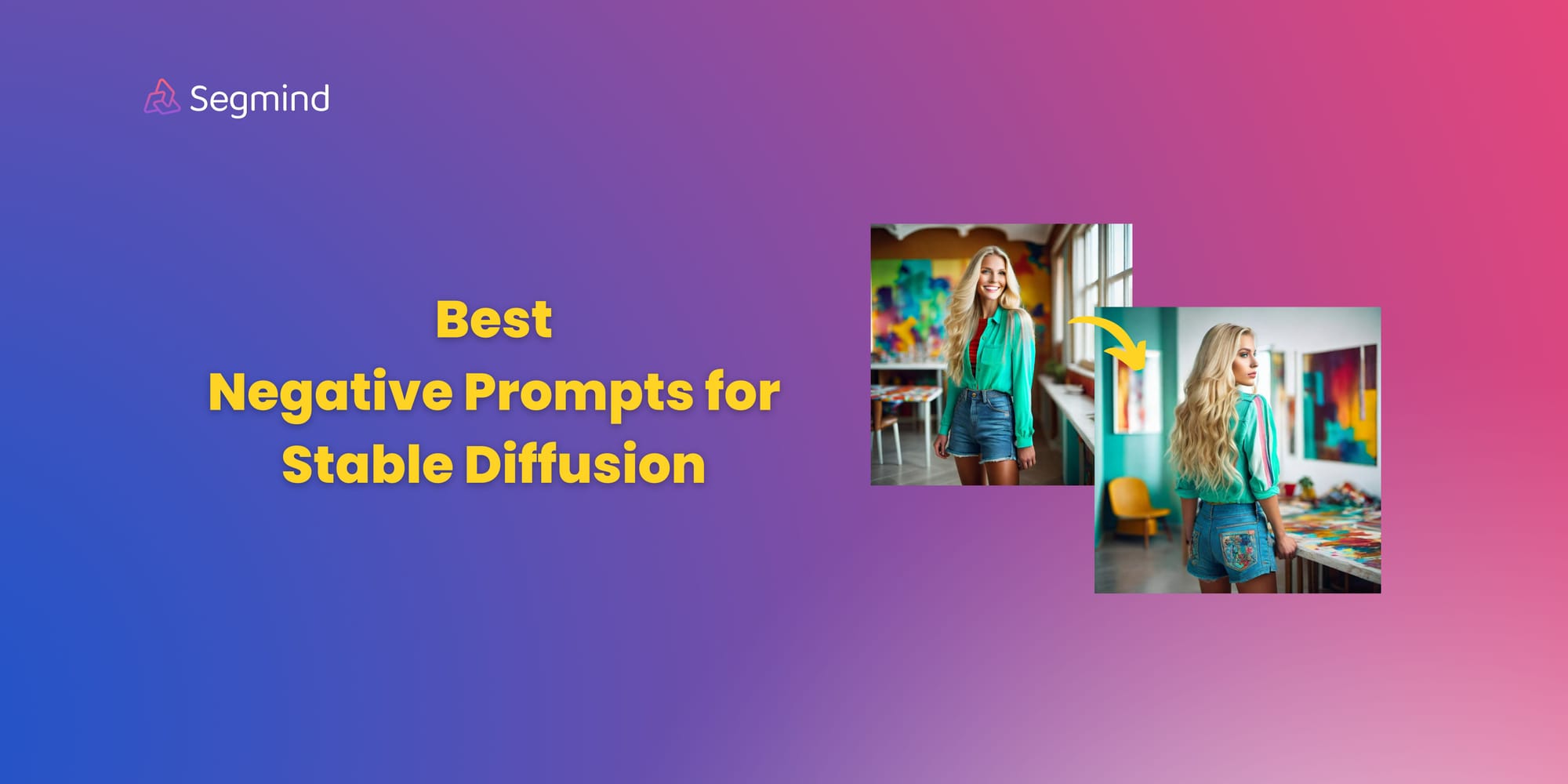Best Negative Prompts for Stable Diffusion
Master the art of image generation with Stable Diffusion using negative prompts. Learn how to specify unwanted elements, experiment with different combinations, and enhance your images’ overall quality and composition.

Negative prompts in Stable Diffusion models are indeed very crucial in helping you generate the perfect image you want. They’re useful especially when you want to specify what you don’t want to see in the generated image using keywords or tokens.
For example, if you’re generating a portrait image and don’t want it to be in black & white color, you can simply write the keyword “black & white” or “monochrome” in the negative prompt. This will ensure that the output image isn’t in black & white.
* Get $0.50 daily free credits on Segmind.
Tips for Using Negative Prompts
When using negative prompts, it’s advisable to start with a small set and gradually expand as necessary. Experimentation is key - testing different combinations will help you discover what best suits your desired style. Remember, specificity is crucial to achieving the results you envision. However, maintaining a balance is essential. Overusing negative prompts can restrict the Stable Diffusions creativity, so use them judiciously.
General Negative Prompts in Stable Diffusion
These prompts are applicable to all image categories and are designed to enhance the overall quality and composition of your image.
Image Quality
This category includes prompts that relate to the overall quality of the image. These could be issues like low resolution, blurriness, or artifacts that degrade the image quality.
Unwanted Elements
These prompts help in avoiding certain elements that you don’t want in your image. This could be anything from watermarks and logos to signatures and usernames.
Composition Issues
This category covers prompts that deal with problems related to the framing and focus of the image. For instance, if the subject of the image is cropped out or if the image is out of focus.
Artistic Issues
These prompts are useful when the issue lies in the artistic interpretation of the image. This could include problems with anatomy, proportions, or other artistic elements
Negative Prompts for Anime/Cartoon Style in Stable Diffusion
Anime, with its distinctive, vibrant visuals and dynamic characters, often requires specific guidance to maintain its unique style. In addition to the standard negative prompts addressing quality issues, you might want to consider prompts that help avoid common anime-specific challenges. For instance, using “not a realistic photo” as a negative prompt can help preserve the animated aesthetic. Here are some refined negative prompts tailored for Stable Diffusion anime:
- Anatomical Issues: “bad anatomy”, “poorly drawn hands”, “extra limbs”, “missing limbs”
- Facial Features: “poorly drawn face”, “fused face”, “cloned face”, “extra eyes”, “oversized eyes”
- Body Proportions: “not extra crus”, “not fused crus”, “not extra thigh”, “not fused thigh”
- Hand and Finger Details: “missing fingers”, “extra fingers”, “elongated fingers”
- Unwanted Elements: “horn”, “2girl”, “amputation”, “ disconnected limbs”
Negative Prompts for Photorealistic Style in Stable Diffusion
When generating images that emulate realistic photography, precision and authenticity are crucial. The following refined negative prompts for Stable Diffusion can help guide the AI to avoid producing misleading or distorted visuals in realistic photos:
- Anatomical Issues: “bad anatomy”, “poorly drawn hands”, “extra limbs”, “missing limbs”
- Facial Features: “poorly drawn face”, “fused face”, “cloned face”, “extra eyes”, “oversized eyes”
- Body Proportions: “extra crus”, “fused crus”, “extra thigh”, “fused thigh”
- Hand and Finger Details: “missing fingers”, “extra fingers”, “elongated fingers”
- Unwanted Elements: “horn”, “2girl”, “amputation”, “disconnected limbs”
- Non-Photorealistic Styles: “cartoon”, “cg”, “3d”, “unreal”, “animate”, “cgi”, “render”, “artwork”, “illustration”, “3d render”, “cinema 4d”, “artstation”, “octane render”, “painting”, “oil painting”, “2d”, “sketch”
- Photography Issues: “bad photography”, “bad photo”, “aberrations”, “abstract”, “black and white”, “collapsed”, “conjoined”, “creative”, “drawing”, “extra windows”, “harsh lighting”, “jpeg artifacts”, “low saturation”, “monochrome”, “multiple levels”, “overexposed”, “oversaturated”, “photoshop”, “rotten”, “surreal”, “twisted”, “underexposed”, “unnatural”, “unreal engine”, “unrealistic”, “video game”
Explore Stable models on Segmind. Get 100 free image generations every day.

